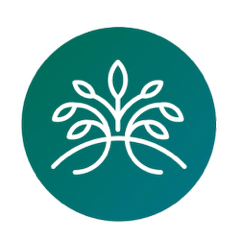Earth Set:Build Webinar series 4. Building a Brand from Day One
Monika Sieminska of Space Jackets presentation. Link to full deck below
Autumn 2025
Building a Brand from Day One
Highlights from Earth Set: Build, Session 4 with Monika Sieminska (Space Jackets)
Branding is often misunderstood by founders. Too many equate it with logos and fonts - the surface - when in fact your brand is the gut feeling people have about you before you even speak.
As Monika Sieminska of Space Jackets puts it:
“When you walk into a party, your brand is what people say about you the next day, when you’re not in the room.”
In this Earth Set: Build session, Monika drew on more than a decade of experience in big London agencies (and now her work building climate brands across biotech, agritech, energy, and fashion) to share how founders can DIY their brand from the start, even with limited time and money.
Here are the core lessons.
1. A brand is more than a logo
Think of your brand as a person or a movie character with layers:
The soul/purpose: why you exist, your motivation. This rarely changes.
The body/strategy: your business model, value proposition, customer story. This evolves as you test and grow.
The look/identity: the visuals and tone of voice: logo, colours, typography, messaging. This only makes sense once the deeper layers are clear.
At the very start, your personal brand will do the heavy lifting. As a founder, you are the brand in early meetings and emails.
2. Focus on the Minimum Viable Brand (MVB)
Like a minimum viable product, your brand doesn’t need a 100-page set of guidelines on day one. What you need is the essence that gets you to your first customers:
Anchor on the customer story. Prototype your brand around their pain points and what makes their life easier.
Test it with a simple landing page. Monika recommends building two around different customer pain points and seeing which resonates.
Iterate fast. Each conversation or networking event is a chance to refine your story.
A practical tip: run customer interviews or surveys where you show two brand/story options and ask what lands. Customers who help co-create your story are more likely to become your first adopters.
3. Common traps for climate founders
Trying to talk to everyone. You need different stories for investors, customers, journalists, and regulators. Don’t confuse them.
Leading with the wrong problem. Starting with “climate collapse” switches people off. Lead with their immediate pain point - compliance, costs, convenience - then connect it back to the bigger mission.
Copying competitors. Research what others are doing, then deliberately stand apart. Otherwise you disappear in the noise.
Being too weird or too bland. Find the balance: familiar enough to be understood in five seconds, different enough to be memorable.
Hiding behind jargon. Run everything through a “bullshit detector” - even ask ChatGPT to flag over-complicated language.
Forgetting to have fun. Branding is where you can play. A founder under pressure is less creative; relaxed experimentation pays off.
4. Tools to find your brand’s personality
Monika used brand archetypes — characters like the Hero, the Caregiver, the Jester — as a shortcut to define brand feel (see all the examples on her slide deck attached below).
Pick an archetype that reflects you.
Consider what your customers need from you (reassurance, disruption, fun, authority).
Check what archetypes your competitors use, then position differently.
Example: Octopus Energy. It works because it’s fun, human, even a little mischievous — the Jester archetype in a sector full of grey utilities. It doesn’t matter whether you “like” it; it matters that it’s distinct and authentic.
5. How to operationalise your brand early
Store your basics (colours, fonts, taglines) in a simple brand kit. Canva Pro is a cheap way to keep this consistent.
Don’t script mission statements to memorise word-for-word. Instead, tell your story authentically and let it evolve.
Be vulnerable: share your struggles, not just your successes. That’s the one thing AI can’t fake.
6. Testing without customers yet?
If you don’t have paying customers:
Find proxies. Talk to potential customers, or people in similar roles.
Ask for help. People like being asked for input, and you’ll create a connection that can turn into future business.
Use surveys with opt-in for interviews. Often people are surprisingly willing to engage.
Key takeaway for founders
Your brand is not what you say, it’s how you make people feel. From day one, focus on the customer story, test it relentlessly, and dare to be different. A brand that is clear, authentic, and bold will carry you further than a perfect logo ever will.
Thanks to Monika Siemiaska for an inspiring, practical session. This was webinar 4 of 6 in the Earth Set: Build series.

